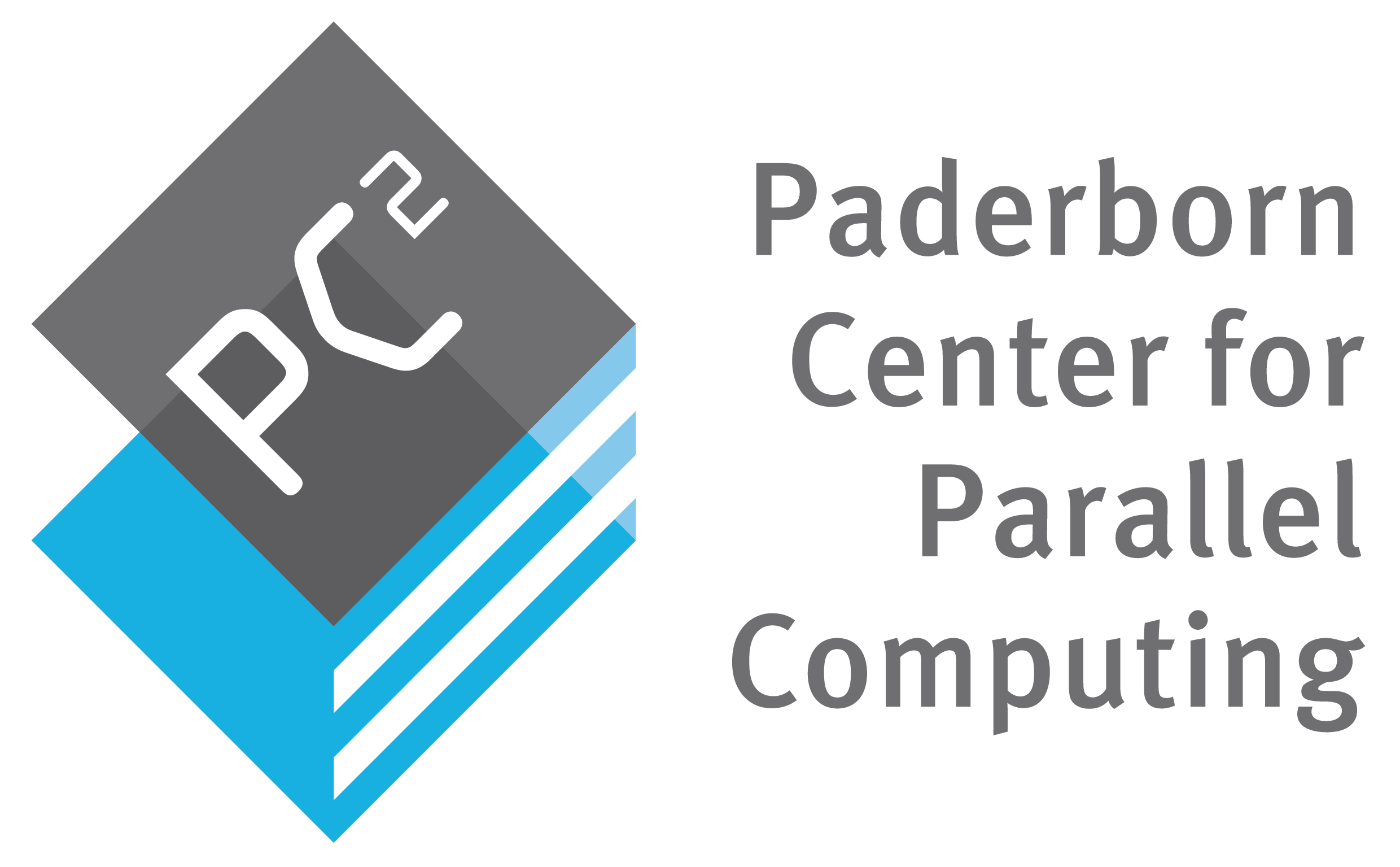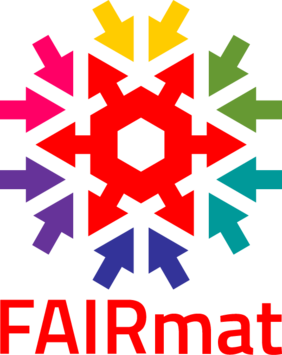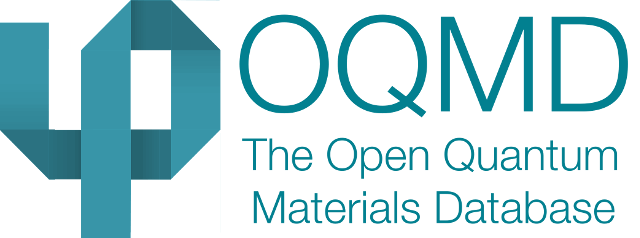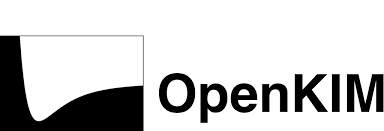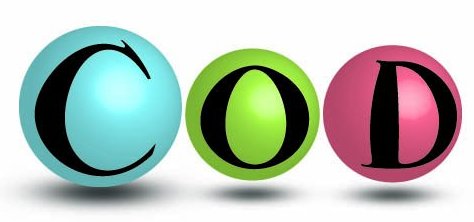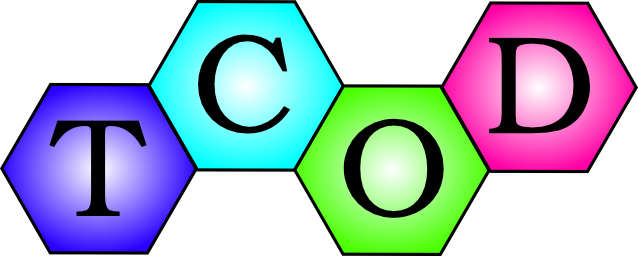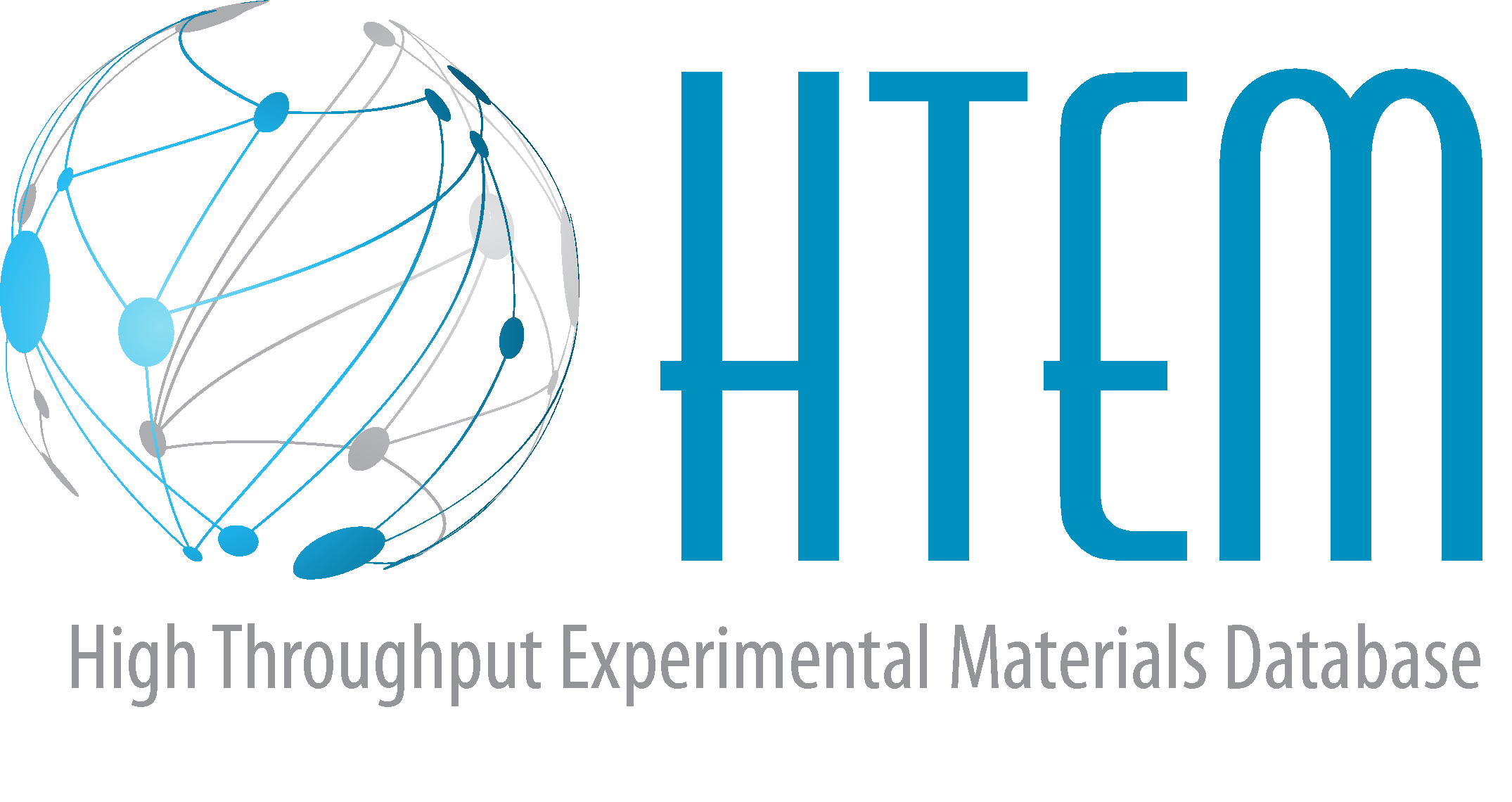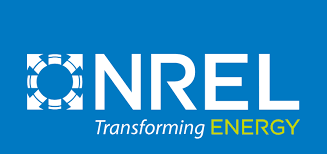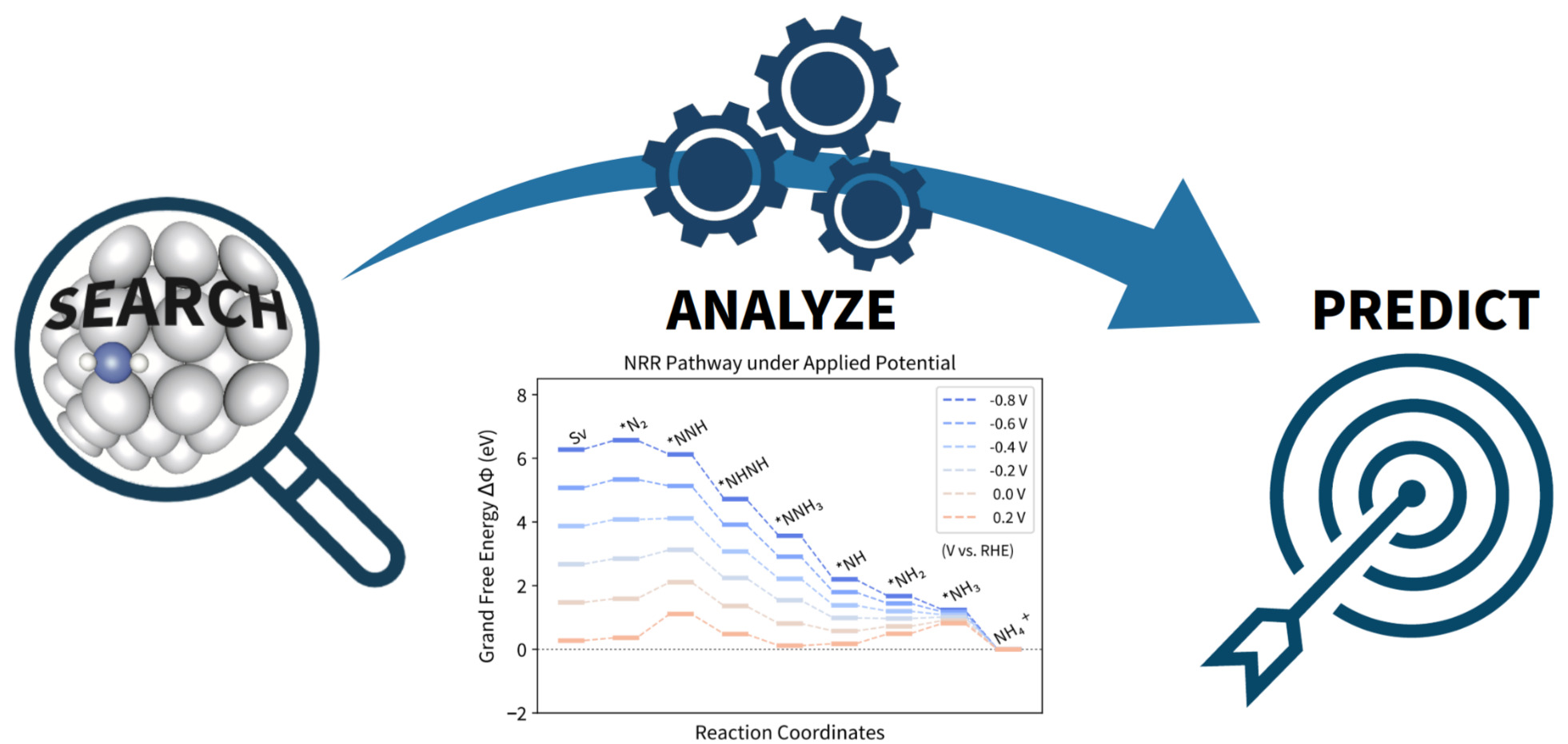Introduction:
In the fields of physics, chemistry, materials science, and atomistic simulations, a wealth of databases and repositories have been developed to facilitate research and discovery. These resources provide experimental and computational data, support high-throughput screening, and enable the integration of machine learning (ML) and also help with big data projects and using artificial intelligence (AI) to predict new materials. Below is a comprehensive list of some of the most prominent databases that researchers and scientists in these areas can explore.
Motivation:
Materials science databases are essential because they centralize vast amounts of curated experimental and computational data, enabling researchers to accelerate materials discovery without costly, time-consuming experiments or simulations. By providing standardized, accessible datasets, these repositories support high-throughput screening (HTS), ML model training, and AI-driven predictions, fostering breakthroughs in applications like renewable energy, electronics, and nanotechnology. They also promote collaboration and reproducibility, ensuring researchers can build on shared knowledge to address global challenges efficiently.
Purpose:
This table compiles prominent open-access, free to use and community-driven databases to guide researchers in selecting resources that align with their needs, whether for crystallographic analysis, computational materials design, or data-driven discovery. It provides a concise overview of each database’s scope, data types, accessibility, and tools, enabling users to compare options and leverage these repositories for innovative research. Designed for physicists, chemists, materials scientists, and data scientists, this resource aims to enhance productivity and advance materials science through data-sharing and collaboration.
Key Term Definitions:
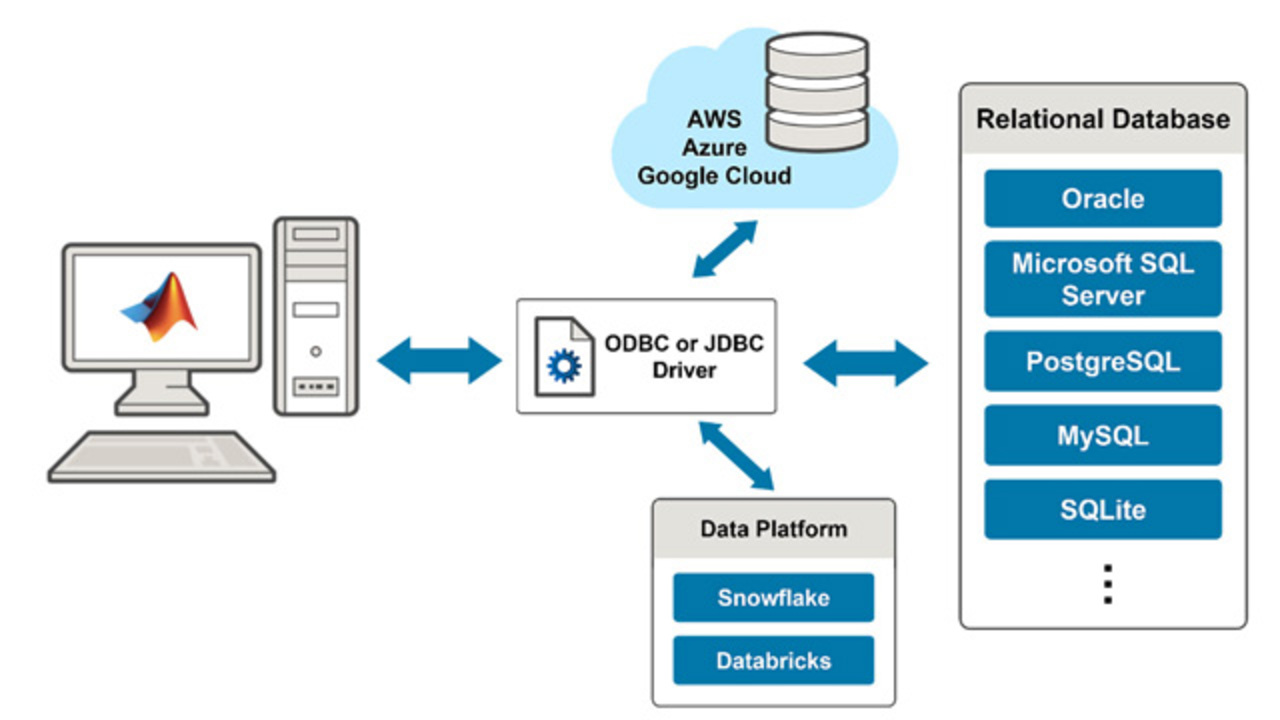
| Name | Field/Area | Material Types | Methods | Properties | Tools & Interfaces | Tutorials/Resources | Responsible group | Institute/Affiliation | Total Entries | Active | Description |
|---|---|---|---|---|---|---|---|---|---|---|---|
|
Computational Materials Science and Materials Design |
Organic and Inorganic Molecules, Crystalline Solids, Metal-Organic Frameworks (MOFs), Porous Materials, Hypothetical Compounds, Intercalation Compounds, Polymorphs and Phase Variants |
DFT, TDDFT, GW, BSE, Phonon, DFPT, MD, ML |
Electronic, Thermodynamic, Mechanical, Vibrational, Magnetic, Structural, Surface and Interface, Defect, Battery-Related, Chemical, Transport, Optical, Spectroscopic, Other Properties |
Web-based interface, API (OPTIMADE-compliant), Pymatgen, Custodian, FireWorks, Atomate, Jobflow, Charge Densities datset | Materials Project Team, led by Prof. Kristin Persson | Lawrence Berkeley National Laboratory (LBNL), University of California, Berkeley | 178627 + | Yes | An open-access, comprehensive resource for materials design and discovery, offering high-throughput computed property data to accelerate innovation and applications. | ||
|
Computational Materials Science, Big Data Analytics
|
Organic and Inorganic Molecules, Crystalline Solids, Metal-Organic Frameworks (MOFs), Porous Materials, Hypothetical Compounds, Intercalation Compounds, Polymorphs and Phase Variants, Amorphous Materials, Nanostructures |
DFT, TDDFT, GW, BSE, Phonon, DFPT, MD, Monte Carlo, TB, DMFT, EELS, Reaction Pathway, ML |
Electronic, Thermodynamic, Mechanical, Vibrational, Magnetic, Structural, Surface and Interface, Defect, Battery-Related, Chemical, Transport, Optical, Topological, Spectroscopic, Other Properties |
NOMAD Repository Interface, NOMAD Encyclopedia, NOMAD AI Toolkit, NOMAD API and OPTIMADE API, NOMAD Oasis | NOMAD Laboratory Team, led by Prof. Claudia Draxl | Humboldt-Universität zu Berlin, Fritz Haber Institute of the Max Planck Society | 19115258 + | Yes | A repository and a platform providing access to, and sharing of, computational materials science data, and offering tools for data transformation and reuse. | ||
| Computational & Experimental Materials Science, Data Infrastructure, FAIR Data Management and Principles | Organic and Inorganic Molecules, Crystalline Solids, Metal-Organic Frameworks (MOFs), Porous Materials, Hypothetical Compounds, Intercalation Compounds, Polymorphs and Phase Variants, Amorphous Materials, Nanostructures, Biomaterials | DFT, TDDFT, GW, BSE, Phonon, DFPT, MD, Monte Carlo, TB, DMFT, EELS, Reaction Pathway, ML, High-Throughput Screening |
Electronic, Thermodynamic, Mechanical, Vibrational, Magnetic, Structural, Surface and Interface, Defect, Battery-Related, Chemical, Transport, Optical, Topological, Spectroscopic, Biophysical, Other Properties |
AI toolkit by FAIRmat, FAIRmat Metadata and Parser Plugins | FAIRmat Consortium, led by Prof. Claudia Draxl | Humboldt-Universität zu Berlin, part of DFG initiative, part of the NFDI | 50236539 + | Yes | A consortium focused on creating a FAIR (Findable, Accessible, Interoperable, Reusable) data infrastructure for materials science, building on NOMAD CoE's framework. | ||
| Computational Materials Science, High-Throughput Materials Discovery |
Inorganic Molecules, Crystalline Solids, Alloys, Intermetallics, Metal-Organic Frameworks (MOFs), Hypothetical Compounds, Polymorphs and Phase Variants |
DFT, Phonon, DFPT, Energy Corrections, Symmetry Analysis, Disorder Modeling, Structure Prediction, ML |
Electronic, Thermodynamic, Mechanical, Vibrational, Magnetic, Structural, Surface, Transport, Scintillator, Other Properties |
AFLOW Web Interface, AFLOW REST API, MendeLib search, AGLOW-ML, AFLOWπ, AFLOW OPTIMADE API | AFLOW Consortium, led by Prof. Stefano Curtarolo | Department of Mechanical Engineering and Materials Science, Duke University | 3530330 + | Yes | A distributed repository for high-throughput ab initio calculations, offering phase diagrams, electronic, and magnetic properties. It supports materials discovery and optimization. | ||
| Computational Materials Science, Crystal Structure |
Inorganic Molecules, Crystalline Solids, Alloys, Intermetallics, Hypothetical Compounds, Polymorphs and Phase Variants |
DFT, Phonon, DFPT, Energy Corrections, Reaction Pathway, Symmetry Analysis, Structure Prediction, MD, ML |
Electronic, Thermodynamic, Mechanical, Vibrational, Magnetic, Structural, Surface, Defect, Chemical, Transport, Other Properties |
Alexandria Web Interface, OPTIMADE API | ICAMS Team led by Prof. Miguel Alexandre Lopes Marques | Interdisciplinary Centre for Advanced Materials Simulation (ICAMS) , Ruhr-Universität Bochum | 415000 + | Yes | A database of theoretical crystal structures discovered via machine learning and DFT, aimed at accelerating materials discovery as well as materials properties. | ||
| Quantum Materials and Computational Materials Science |
Inorganic Molecules, Crystalline Solids, Alloys, Intermetallics, Hypothetical Compounds, Polymorphs and Phase Variants |
DFT, Phonon, DFPT, Energy Corrections, Surface Calculations,
Reaction Pathway, Symmetry Analysis, Structure Prediction, ML
|
Eectronic, Thermodynamic, Mechanical, Vibrational, Magnetic, Structural, Surface, Defect, Chemical, Transport, Other Properties |
Web-based interface, OQMD API named REST, OQMD and OPTiMaDe | Wolverton Research Group led by Prof. Chris Wolverton | Northwestern University, USA | 1226781 + | Yes | A high-throughput DFT database provides open access to computed thermodynamic and structural properties, validated against experiments, supporting materials discovery and the design of novel materials. | ||
| Computational & Experimental Materials Science, Materials Modeling and FAIR principles |
Organic and Inorganic Molecules, Crystalline Solids, Metal-Organic
Frameworks (MOFs),
Covalent-Organic Frameworks (COFs), Alloys, Intermetallics, Hypothetical Compounds, Polymorphs and Phase Variants, Porous Materials, Nanostructures, Biomaterials |
DFT, TDDFT, MBPT, BSE, Phonon, DFPT, Reaction Pathway, Monte Carlo, MD, ML |
Electronic, Thermodynamic, Mechanical, Vibrational, Magnetic, Structural, Surface, Defect, Chemical, Transport, Optical, Spectroscopic, Battery-Related, Biophysical, Other Properties |
AiiDA, OPTIMADE APIs, other useful tools, | MARVEL projects coordinated and conceived by Prof. Nicola Marzari and MAX Centre of Excellence | École Polytechnique Fédérale de Lausanne (EPFL), Switzerland and Materials Cloud's Partners | 13775215 + | Yes | A platform for sharing computational materials science data and tools, emphasizing reproducibility and FAIR principles. It features curated datasets, simulation workflows, and educational resources to support materials discovery and design. | ||
| Computational Materials Science, Classical Molecular Dynamics |
Organic and Inorganic Molecules, Crystalline Solids,
Alloys, Intermetallics, Polymers, Nanostructures, Biomaterials |
MD, Monte Carlo Simulations, Energy Minimization, Interatomic Potential Fitting, ML |
Structural, Thermodynamic, Mechanical, Vibrational, Surface, Defect, Chemical, Transport, Other Properties |
Knowledgebase of Interatomic Models API, Web-based interface, other Software and Projects | Knowledgebase of Interatomic Models project, KIM Initiative project | University of Minnesota, USA | 360 + Classical Molecular Simulation Models | Yes | A repository of interatomic potentials and tools for atomistic simulations, aimed at enhancing reliability and fostering collaboration and reproducibility in molecular dynamics studies. | ||
| Computational & Experimental Materials Science, Machine Learning | Organic and Inorganic Molecules, Crystalline Solids, Alloys, Intermetallics, Metal-Organic Frameworks (MOFs), Hypothetical Compounds, Polymorphs and Phase Variants, Topological Materials, Superconductors | DFT, Phonon, DFPT, Reaction Pathway, Monte Carlo, TB, MD, ML |
Electronic, Thermodynamic, Mechanical, Vibrational, Magnetic, Structural, Surface, Defect, Chemical, Transport, Optical, Topological, Superconducting, Spectroscopic, Other Properties |
JARVIS-Tools, ALIGNN, JARVIS-Leaderboard, JARVIS-Tools Notebooks, AtomGPT, ChemNLP, AtomVision, AtomQC, InterMat, DefectMat, TB3Py, REMI |
|
JARVIS is founded by Prof. Kamal Choudhary | National Institute of Standards and Technology (NIST), USA | 80000 + | Yes | JARVIS automates materials discovery using DFT, classical force-field, and machine learning calculations. It hosts a diverse range of materials properties, supporting applications in electronics, energy, and nanotechnology, with tools for data-driven research. | |
| Computational & Experimental Materials science, and Data Science |
Crystalline Solids, Organic Molecules, Inorganic Molecules, Alloys, Intermetallics, Metal-Organic Frameworks (MOFs), Covalent-Organic Frameworks (COFs), Polymers, Porous Materials, Nanostructures, Biomaterials, Hierarchical Materials, Topological Materials |
DFT, TDDFT, MBPT, GW, BSE, Phonon, DFPT, Reaction Pathway, Monte Carlo, High-Throughput Experimentation, MD, ML |
Electronic, Thermodynamic, Mechanical, Vibrational, Magnetic, Structural, Surface, Defect, Chemical, Transport, Optical, Topological, Superconducting, Spectroscopic, Biophysical, Rheological, Other Properties |
NIST Materials Data Curation System (MDCS), NIST Materials Data Repository, MGI Code Catalog, REMI, other Tools and Softwares | Materials Genome Initiative (MGI) Development Team | MGI is coordinated by the National Institute of Standards and Technology (NIST) | 100000 + | Yes | The Materials Genome Initiative (MGI) at NIST is a multi-agency effort to accelerate materials discovery by integrating computational and experimental tools, databases, and data standards. | ||
| Cheminformatics, Chemical Biology, Medicinal Chemistry, Drug Discovery, Computational & Experimental Toxicology |
Organic Molecules, Inorganic Molecules, Polymers, Lipids, Carbohydrates, Peptides, siRNAs, miRNAs, Chemically Modified Macromolecules, Nucleic Acids, Proteins |
MD, Monte Carlo Simulations, Energy Minimization, Chemical Structure Standardization, Similarity Searching, Bioactivity Analysis
|
Chemical, Physical, Biological, Structural, Spectroscopic, Toxicological, Pharmacological, Other Properties
|
PubChem Sketcher, PubChem3D, other tools | PubChem team including Sunghwan Kim, Evan E. Bolton, and others | National Center for Biotechnology Information (NCBI) | 2930000 + | Yes |
A free, open-access chemical database launched by NCBI in 2004, hosts chemical substances, unique structures, and bioactivity data points, supporting cheminformatics, drug discovery, and machine learning. |
||
| Cheminformatics, Medicinal Chemistry, Chemical Biology, Organic and Inorganic Chemistry, Spectroscopy, Crystallography |
Organic Molecules, Inorganic Molecules, Polymers, Organometallic Compounds, Peptides, Carbohydrates, Lipids |
MD, Monte Carlo Simulations, Energy Minimization, Chemical Structure Standardization, Similarity Searching, Synthetic Procedure Analysis |
Chemical, Physical, Structural, Spectroscopic, Toxicological, Pharmacological, Synthetic, Other Properties |
Structure Search, ChemSpider SyntheticPages, APIs, Chemical Identifier Resolver, ChemMantis, Interactive Visualization, ChemSpiPy | ChemSpider Developers and Maintainers Team | Royal Society of Chemistry (RSC) | 1300000 + | Yes |
ChemSpider, a free chemical database provides access to chemical structures and associated data, supporting cheminformatics, drug discovery, and education. |
||
| Organic and Organometallic Materials and Electronic Structure |
Organic Crystalline Solids, Organometallic Compounds, Metal-Organic Frameworks (MOFs), Charge Transfer Salts, Hypothetical Compounds, Polymorphs and Phase Variants |
DFT, Phonon, DFPT, Energy Corrections, Symmetry Analysis, Structure Prediction, ML |
Electronic, Thermodynamic, Vibrational, Magnetic, Structural, Topological, Other Properties |
OMDB Web interface |
|
Organic Materials Database (OMDB) Team | Nordita, a joint institution of KTH Royal Institute of Technology and Stockholm University | 40000 + | Yes |
OMDB is a free database of electronic and magnetic properties for 3D organic crystals, hosted at Nordita. Using DFT and COD data, it supports data mining for organic electronics and quantum materials. |
|
| Crystallography, Materials Science |
Organic and Inorganic Crystalline Solids, Metal-Organic Compounds, Minerals, Organometallic Compounds, Molecules |
Chemical Structure Standardization, Symmetry Analysis, Substructure Searching, Diffraction experiments (XRD, Neutron Diffraction, Electron Diffraction) |
Structural, Chemical, Other Properties |
Web-based search and visualization tools, Tools from CrystalEye | Crystallography Open Database Development Team | A global community of crystallographers and Independent foundation | 523908 + | Yes | COD is an open-access database that collects and disseminates crystallographic data with a focus on providing access to data that supports scientific research. | ||
| Theoretical Crystallography, Computational Materials Science |
Organic and Inorganic Crystalline Solids, Metal-Organic Compounds, Organometallic Compounds, Hypothetical Compounds, Polymorphs and Phase Variants, Molecules |
DFT, MD, Phonon, DFPT, Energy Minimization, Chemical Structure Standardization, Symmetry Analysis, Structure Prediction, Substructure Searching |
Structural, Chemical, Thermodynamic, Vibrational, Other Properties |
Web-based search and visualization tools | Theoretical Crystallography Open Database Team | A global community of crystallographers and Independent foundation | 7488 + | Yes | TCOD hosts theoretically derived crystal structures, complementing COD by focusing on computational predictions. It supports materials design through standardized access and integration with crystallographic tools. | ||
| Crystallography, Inorganic Chemistry, Materials Science |
Inorganic Crystalline Solids, Alloys, Intermetallics, Minerals, Metal-Organic Compounds, Theoretical Inorganic Compounds |
DFT, XRD, Neutron Diffraction, Electron Diffraction, Synchrotron Radiation-Based Diffraction, Rietveld Refinement | Structural, Chemical, Physical, Magnetic, Other Properties | Inorganic Crystal Structure Database (ICSD) Team founded by Prof. Günter Bergerhoff | FIZ Karlsruhe, National Institute of Standards and Technology (NIST), USA | 307301 + | Yes | ICSD is a premier database of inorganic crystal structures, widely used for structural analysis and materials research. It combines experimental and theoretical data. | |||
| Computational Materials Science, Materials Engineering |
Crystalline Solids, Alloys, Perovskites, Transition Metal Compounds, Surface Systems |
DFT, MBPT, Phonon, DFPT, Energy Corrections, High-throughput, ML |
Electronic, Thermodynamic, Structural, Vibrational, Surface, Chemical, Other Properties |
Computational Materials Repository (CMR) Team | Center for Atomic-scale Materials Design (CAMD), Technical University of Denmark (DTU), Denmark | 10000+ | Yes |
CMR is an open-access repository for computational materials data, integrated with ASE to support simulation workflows and materials research. |
|||
| Computational Materials Science, Machine Learning |
Crystalline Solids, Alloys, Steels, Glasses, Phononic Crystals, Dielectric Materials, Metallic Materials, Superconductors |
DFT, ML, Data Curation and Integration, Nested Cross Validation, Benchmarking |
Electronic, Thermodynamic, Mechanical, Vibrational, Optical, Superconducting, Other Properties |
Materials Project Team (associated with Anubhav Jain ’s group) | Lawrence Berkeley National Laboratory (LBNL), University of California, Berkeley | 132000 + | Yes |
MatBench is an open-access collection of benchmark datasets for testing machine learning models in materials science, designed to standardize and accelerate ML research. |
|||
| Data-driven Materials Design and Discovery, Materials data resource |
Polymer Nanocomposites, Polymers, Nanofillers, Structural Metamaterials
|
Literature Curation, Fourier-transform infrared (FTIR), Raman, or UV-Vis spectroscopy, TEM, SEM, AFM, Differential Scanning Calorimetry (DSC), SAXS, WAXS, ML |
Mechanical, Thermal, Viscoelastic, Dielectric, Optical, Chemical, Physicochemical, Other Properties |
MaterialsMine Team including Prof. Cate Brinson, Wei Chen and many more | Five research institutions including Duke University, Rensselaer Polytechnic Institute, National Renewable Energy Laboratory etc | 2000 + | Yes |
MaterialsMine is an open-source, FAIR-compliant materials database focused on polymer nanocomposites (NanoMine) and mechanical metamaterials (MetaMine). |
|||
| Data-driven materials research, including Experimental and Computational data |
Crystalline Solids, Organic Molecules, Polymers, Alloys, Metal-Organic Frameworks (MOFs), Nanocomposites, Energy Materials, Hierarchical Materials, Metamaterials
|
XRD, Neutron Diffraction, Synchrotron X-ray Computed Tomography, SAXS/WAXS, FTIR, Raman, UV, XAS, TEM, SEM, AFM, DSC, TGA, DFT, MD, ML |
Electronic, Thermodynamic, Mechanical, Structural, Chemical, Optical, Magnetic, Other Properties |
MDF Forge, MDF Connect Client, Toolbox, Web Interface, Foundry-ML |
MDF Development Team including Ben Blaiszik, Logan Ward, Kyle Chard, Ian Foster |
University of Chicago, Argonne National Laboratory, National
Institute of Standards and Technology (NIST)
|
650 + | Yes |
MDF is an open-source, free-to-use platform for materials science, offering data publication and discovery services. |
||
| Materials Science based on their Topological Properties |
Crystalline solids, Topological insulators, Dirac semimetals, Magnetic topological materials, Perovskites, skutterudites, and oxides |
DFT, MBPT, GW, TDDFT, Topological Quantum Chemistry, Phonon, DFPT, MD, ML, XRD, ARPES, STM, AFM, CVT |
Electronic, Thermodynamic, Hall effect, Magnetoresistance, Topological properties, Superconductivity, Magnetic, Thermoelectric, Catalytic |
Web-based Interface, Search Interface |
TMD Development Team including Barry Bradlyn, L. Elcoro, Jennifer Cano, M. G. Vergniory |
MPI Halle and Dresden, Germany, University of the Basque, Princeton
University, New Jersey, USA, Chongqing University, China
|
38184 + | Yes |
Topological Materials Database is a free, partially open-source platform cataloging topological materials, including insulators, semimetals, and magnetic materials, based on topological quantum physics and chemistry. |
||
| Raman Spectroscopy Data for Crystalline Materials | Crystalline solids, Minerals, Synthetic crystals, Compounds from COD |
DFT, Phonon, DFPT, XRD, EDX, Raman Spectroscopy
|
Crystal structures, Lattice parameters, Chemical, Electronic, Vibrational, Raman spectra | A collaborative effort under the European Union's Horizon by Lahfid Abdeltif, Mohamed-Ramzi Ammar and others |
Raman Open Database (ROD) is part of the SOLSA project |
1133 + | Yes |
Raman Open Database (ROD) is a free, public-domain database hosting 1133 Raman spectroscopy and crystallographic datasets for crystalline materials, licensed under CC0. |
|||
| Computational & Experimental Materials Science, Renewable Energy |
Perovskites |
DFT, DFPT, High-throughput, ML, XRD, SEM, EDX, PL,
|
Electronic, Optical, Spectroscopic, Formation energy, Power conversion efficiency | PDP Team including Prof. Eva Unger and Prof. T. Jesper Jacobsson |
Helmholtz-Zentrum Berlin (HZB) and supported by MaterialsZone and GRECO |
42400 + | Yes |
The Perovskite Database, initiated is an open-access database of perovskite solar cell devices, adhering to FAIR principles to enable researchers to explore, upload, and analyze data for advancing photovoltaic technology. |
|||
| Experimental Materials Science, Renewable Energy, and Data Science |
Inorganic thin-film materials, Metal oxides, Metal
chalcogenides, Metal nitrides, Metal alloys
|
High-throughput, ML, XRD, XRF, UV-Vis Spectroscopy,
High-throughput characterization
|
Electronic, Optical, Spectroscopic, Crystal structure, Chemical, Thin-film morphology, |
HTEM has been developed by Caleb Phillips and Andriy Zakutayev and others | 320000 + | Yes |
HTEM DB aims to discover new materials with valuable properties by sharing extensive, high-quality experimental data from NREL's high-throughput experiments. |
||||
| Materials Science, Computational Science, and Renewable Energy |
Thin-film semiconductors, Photovoltaic materials , Metal oxides, Metal chalcogenides, Organic semiconductors, Perovskite, Energy materials |
DFT, TDDFT, GW, DFPT, High-throughput, ML |
Electronic, Optical, Spectroscopic, Crystal structure, Chemical,
Power conversion efficiency, Electrochemical, Catalytic
|
|
NRELMatDB Development Team | 10000 + | Yes |
NRELMatDB is an open-access database of computed material properties using high-throughput first-principles methods to support materials discovery for renewable energy applications |
|||
| Materials Science, Computational Chemistry, and Catalysis |
Metal surfaces materials, Reactant molecules, Energy materials,
Catalytic materials
|
DFT, Energy Minimization, Chemical Structure Standardization,
Reaction Pathway
|
Electronic, Chemical, Electrochemical, Catalytic, Reaction ad Activation Energies |
SUNCAT Center for Interface Science and Catalysis Team |
SUNCAT Center for Interface Science and Catalysis and SLAC National Accelerator Laboratory, Stanford University |
100000 + | Yes |
Catalysis-Hub is an open-access database DFT-calculated reaction energies on catalytic surfaces, aim to accelerate the discovery of catalysts for sustainable energy applications. |
|||
| Computational Chemistry, Materials Science, and Electrochemistry, focused on Catalysis and Energy Storage Applications |
Metals and Alloys, Transition Metal Oxides, Chalcogenides, Intermetallics and Nitrides, Semiconductors, Electrolytes and Interfaces |
DFT, MBPT, GW, Solvation Models, Monte Carlo, MD, ML |
Electronic, Thermochemical, Surface and Interface, Electrochemical, Structural, Photoelectrochemical, adsorption, Catalytic, Chemical, Properties |
Web-Based Interface, Visualization Tools, API Access, Integration with NREL Tools |
|
BEAST DB Team with contributions from NREL |
National Renewable Energy Laboratory (NREL) and others |
10000 + | Yes |
B eyond-DFT E lectrochemistry with A ccelerated and S olvated T echniques Database (BEAST DB) is an open-access computational electrochemical database, utilizing DFT and advanced methods to deliver adsorption and reaction energies for catalytic surfaces, aiding catalyst discovery in energy storage and conversion. |
